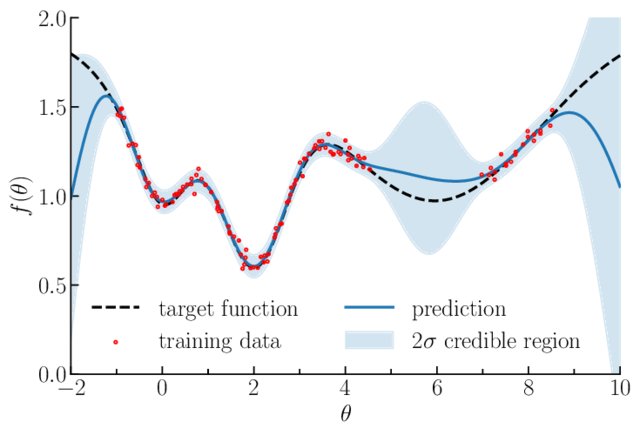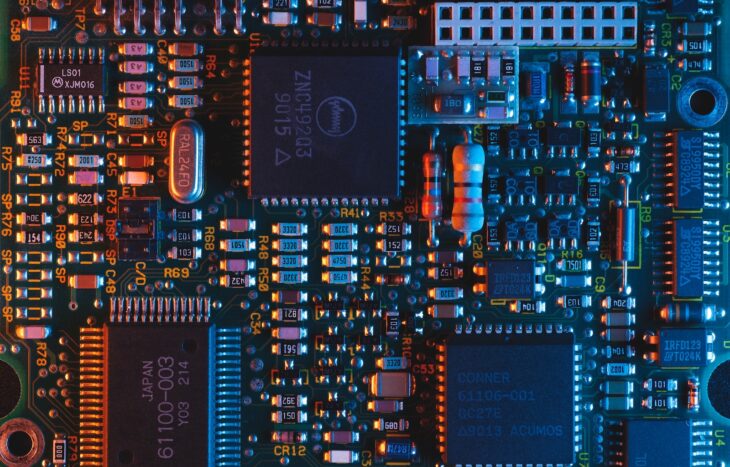By Andrew Halonen, Mayflower Consulting LLC.
Material developers and producers are feeling global pressure to optimize their respective businesses, especially as communications get easier and as once-difficult tasks are optimized and commoditized by automation technologies. Gone are the days that a midwestern forging producer would automatically have a competitive advantage with an automotive OEM over a shop in Taiwan simply because of geography. In this changing industrial world, how can aluminum and magnesium producers stay competitive? How can they maximize the resources that have been invested in their facilities already?
Machine learning is a branch of artificial intelligence (AI) that enables computers to learn from data without explicit programming. Recent advances in technology have expanded its capabilities, making it applicable across industries. It improves decision-making, optimizes operations, and is accessible to businesses of all sizes, driving efficiency and competitive advantage.
Machining learning practices can apply to every aspect of the manufacturing process, including casting, extrusion, forging, rolling, stamping, forming, welding, and machining operations. This article aims to explore the value of machine learning in light metal manufacturing, demonstrating its economic advantages. As such, it is likely to become a common tool for product development and manufacturing within the next decade.
Machine Learning 101
Machine learning is a tool in the large Industry 4.0 toolbox, which utilizes algorithms to help users analyze data. The algorithms don’t care if the data is for chocolate chip cookies or metal or paint, as long as there is sufficient data to correlate to make accurate predictions.
For smaller data sets like those in metal manufacturing operations (hundreds to a few thousand lines of data), the common machine learning model is called Bayesian optimization, which leverages Gaussian process regression, a nonlinear multi-variable regression model. Gaussian process regression is currently state of the art for a small set of data with the ability to calculate the uncertainty of predictions.
Figure 1 shows how the data is aligned on most of the curve.1 However, at data point 6 on the horizontal axis, there are fewer data points for the system to work with, so the algorithm makes a prediction based on the data surrounding the gap. In other words, it makes its best guess. Even though this best guess might have a high uncertainty, it is still useful for operators and engineers to use as a guide. It helps narrow down the region of interest.

There are other models — such as support vector machine, random forest, and deep-learning neural network — that work well on certain types of datasets. The nice thing is that all of these models could be tested in parallel to determine which model works best for a dataset.
A common question is whether the tools that are already available in-house, like Excel and MiniTab, can be used for machine learning. Excel is a great tool for analyzing simple, everyday datasets and plotting 2D or even 3D graphs. It can also do line fitting, like linear or polynomial axes on 2D graphs or even linear regression.
MiniTab takes it a step further, as it is able to do many different types of statistical analysis on the dataset. In terms of extracting correlation between columns of data, MiniTab is able to provide a hint if the data is correlating or if there is no relationship at all between output and inputs. However, it can’t predict output based on inputs.
Both of these tools have worked well in the past, but they break down when it comes to bigger and more sophisticated datasets. For example, with 13 input conditions, the data will have to be charted across 13-dimensional parameters instead of simple 2D or 3D charts or models. None of the built-in tools in Excel and MiniTab were designed to handle this kind of data. Thus, machine learning comes to the rescue.
Sophisticated machine learning models that have been developed in the last decades can handle these types of data with ease and great speed. Even for simple tasks like linear regression, which Excel or MiniTab are able to complete in several hours, machine learning is able to apply a linear regression model in libraries like SciKit-learn,2 and reduce them down to a fraction of a second to do.
One of the main considerations in developing a machine learning program for any industry is how much data to use. The answer is often “the more data, the better.” Generally, there are multiple considerations regarding which data to use, such as the quality of the data, quantity and completeness of the dataset, and accuracy of the data. In the production of aluminum products, such as extrusions, forgings, and sheet, there are a multitude of variables to consider. Imagine these variables as a large table of data, with each variable representing a column. One series of variables would be the elements included in the alloy used, including Al, Si, Mg, Mn, Cu, Ti, and Fe. The next columns would represent the processing conditions, which for extrusion would include billet preheat, extrusion pressure and speed, die number, quench rate, quench temperature, and a host of others. The next columns would represent the output metrics monitored by the extruder that are often aligned with customer success, such as yield strength, tensile strength, elongation, bending angle before cracking, crack length, straightness, pressure tightness, and tolerances. This example alone lists 21 columns of data, 13 of which are input conditions representing a range of data within each. This dataset represents the current conditions of the aluminum operations, which can be used to address a number of goals, such as cost reduction, scrap reduction, productivity improvement, solving intermittent problems, estimating a future product success (quoting level), and simulating the process for quality assurance and teaching.
In addition to the input and output metrics noted, when applying machine learning to extrusions, it may make sense to monitor the data further upstream, including casting and even the raw material supply, which often includes post-consumer scrap.3 There may also be variations in the product based on the beginning, middle, and end of the log.
When applying machine learning to forging, the key information for the inputs is the composition and process control metrics around heating and cooling, dies, die maintenance, lubrication, strain rate, and heat treatment. Output data include mechanical properties, non-destructive testing inspection criteria, grain size, distribution, and orientation. Also, the presence of cracking, folds, or insufficient filling may be added to the data.
Case Studies
In order to best understand how machine learning works in an aluminum environment, two case studies are presented here. Both cases are from Amatrium Inc., a machine learning software company that focuses on supporting materials companies in reducing scrap and improving production.
Aluminum Foundry
Eck Industries, an aluminum foundry, challenged Amatrium to use machine learning to predict the properties of an aluminum alloy using cerium. The foundry had already been working with cerium in aluminum, so it had prior data that could be utilized. In this case, the desired base alloy was 535, called “Al-mag” due to the high amount of magnesium in the aluminum. While the machine learning model was constructed, the foundry produced material samples and test coupons and performed mechanical testing.
For best results, the machine learning model should be built on a dataset from the materials and process parameters that are used together in the same manufacturing facility. In this case, the data came from Eck Industries using their own equipment. The study used the following datasets for its machine learning model:
- Inputs: Al-6.9Mg-0.1Si-0.1Fe-0.04Cu-0.15Mn-0.015 Ti-(0-8)Ce by wt.% with an as-cast F temper. Note that the challenge by the foundry was 0–2% Ce, but the machine learning model was able to predict a larger range of 0–8% Ce.
- Outputs: Tensile strength, yield strength, and elongation.
Altogether, there were 800 lines of data applied to the machine learning model. The data was gathered for each process — analytical and tensile testing — and the results were remarkably accurate, with a number of the machine learning values within or very close to the range of data from testing (Table I). The largest discrepancy was in the elongation, and this was noted as being due to complications in grain refinement with the aluminum-cerium alloy system.4 Though this dataset was used to solve for the mechanical properties, the tool can also be used to solve for a process condition. The machine learning software is exceptionally good at recognizing patterns of correlation between the data points.

Aluminum Rolling Mill
A second case study was in an aluminum rolling mill, where a common defect grew in size to the point that the trimmed scrap level was unacceptable. The mill had produced this product for years before this intermittent issue arose. The mill operators and engineers naturally looked at adjusting the rolling mill controls to solve the issue, but were not successful. The scrap level persisted, causing issues regarding reduced delivery volumes and the associated loss of income. Eventually, the mill reached out to Amatrium for help.
Rolling mills have a lot of data, from chemical composition to process conditions to properties. Using a data set with thousands of lines, the machine learning model solved for this defect condition, which was well-known and was regularly monitored and measured. This is an area where machine learning shines, basing its determinations not on a hunch or a guess (as a human would do), but on the patterns it analyzes within the data that correlate inputs and outputs.
Using the dataset to understand the inputs that most affected this defect, Amatrium’s machine learning tool was able to correlate certain chemistry ranges that had a direct effect on this defect. The rolling mill operators admitted that they would never have guessed that the alloy chemistry would have had such a strong influence on the defect. Using the machine learning model, the rolling mill operators could closely monitor the chemistry to minimize the size of the defect, which in turn minimizes the scrap rate.
Adapting to Machine Learning
News regarding the adoption of AI technologies in various industries has resulted in mixed perspectives, ranging from the positive to the frightening. For a broader understanding of AI and a discussion of its “scary” side, Lex Fridman conducts an excellent interview with Sam Altman, CEO of OpenAI, that addresses some of these concerns.6
When considering the adoption of machine learning tools, attitude is key. The company must see the potential value in adopting the tool and believe in its potential enough to try it out. Once the new tool is discussed and understood, the data is collected, and the machine learning model is built, the company will be able to properly understand its value. The “ah-ha” moment comes when comparing the data and how it’s presented — such as a mass of numbers in Excel, a scatterplot with no clearly defined outcome, or the same data result as it’s presented via machine learning (Figure 2).5 With the third option, the data is presented in such a way as to provide clear actionable information for the user.

Moving Forward
Historically, the evolution of industry around the world has taken around 50-100 years, with each major leap in innovation creating additional wealth by drastically improving productivity. The concept of Industry 4.0 was initiated around 2010, which means that it is still in its early stages. Many may ask whether Industry 4.0 is just hype or if it is real. From the few examples presented in this article, it seems clear that it is more than just hype and that there are practical applications that can be launched, executed, and used every day. Therefore, machine learning is likely to become a common tool for product development, because it uses past data and will enable a significant reduction in time and the number of iterative trials to achieve the desired product.
Likewise, in manufacturing, once the operation determines the meaningful metrics and sets up an automatic system to collect and organize the data, the execution of machine learning will be easy and accessible across the organization. The return on investment is straightforward and quick. Good machine learning models don’t require programming skills to operate and update with new data.
In addition, these machine learning systems can be applied to both newer and older plants. This is especially important as companies consider the future of their operations — particularly in regards to retaining the knowledge base of its personnel. Kevin Burns,7 a process excellence engineer at Gary Works, a 110-year-old steel mill in Gary, IN, said, “Now we have all of this data, so you can go through, review what happened and make good decisions based on the data that you have at your hand instead of relying on the guy that has 30, 40 years out here, and what he remembered happening.”
From personnel to maintaining competitiveness, the need to maximize the value from data is imperative to an efficient and profitable operation. With many older, experienced operators and plant managers leaving the industry, now is a great time for aluminum and magnesium companies to build a software model that represents their unique materials and manufacturing process. In this way, a broad team — from young to old — can learn from it as much as possible before the knowledge leaves the building.
References
- Leclercq, Florent, “Bayesian optimization for likelihood-free cosmological inference,” ResearchGate, September 2018.
- “Machine Learning in Python,” SciKit-Learn.
- Svendsen, Andrea, “SCM Celebrates 20th Anniversary with New Casthouse and Extrusion Line,” Light Metal Age, April 2023, p. 8.
- “Machine Learning Predicts Aluminum Alloy Properties,” Modern Casting Magazine, April 2023, p. 54.
- Communication graphic created by Amatrium.
- Fridman, Lex, “#367 – Sam Altman: OpenAI CEO on GPT-4, ChatGPT, and the Future of AI,” podcast, March 25, 2023.
- Bousquette, Isabelle, “U.S. Steel Looks to Forge High-Tech Future at Mills Both New and Old,” Wall Street Journal, December 1, 2022.
 Andrew Halonen is president of Mayflower Consulting, LLC, a lightweighting consultancy that provides strategic marketing, market research, and business development for high tech clients. Halonen works with castings, extrusions, brakes, and new material development programs, and is a guest writer for Light Metal Age. Contact him at: www.lightweighting.co.
Andrew Halonen is president of Mayflower Consulting, LLC, a lightweighting consultancy that provides strategic marketing, market research, and business development for high tech clients. Halonen works with castings, extrusions, brakes, and new material development programs, and is a guest writer for Light Metal Age. Contact him at: www.lightweighting.co.
Editor’s Note: This article first appeared in the June 2023 issue of Light Metal Age. To receive the current issue, please subscribe.

